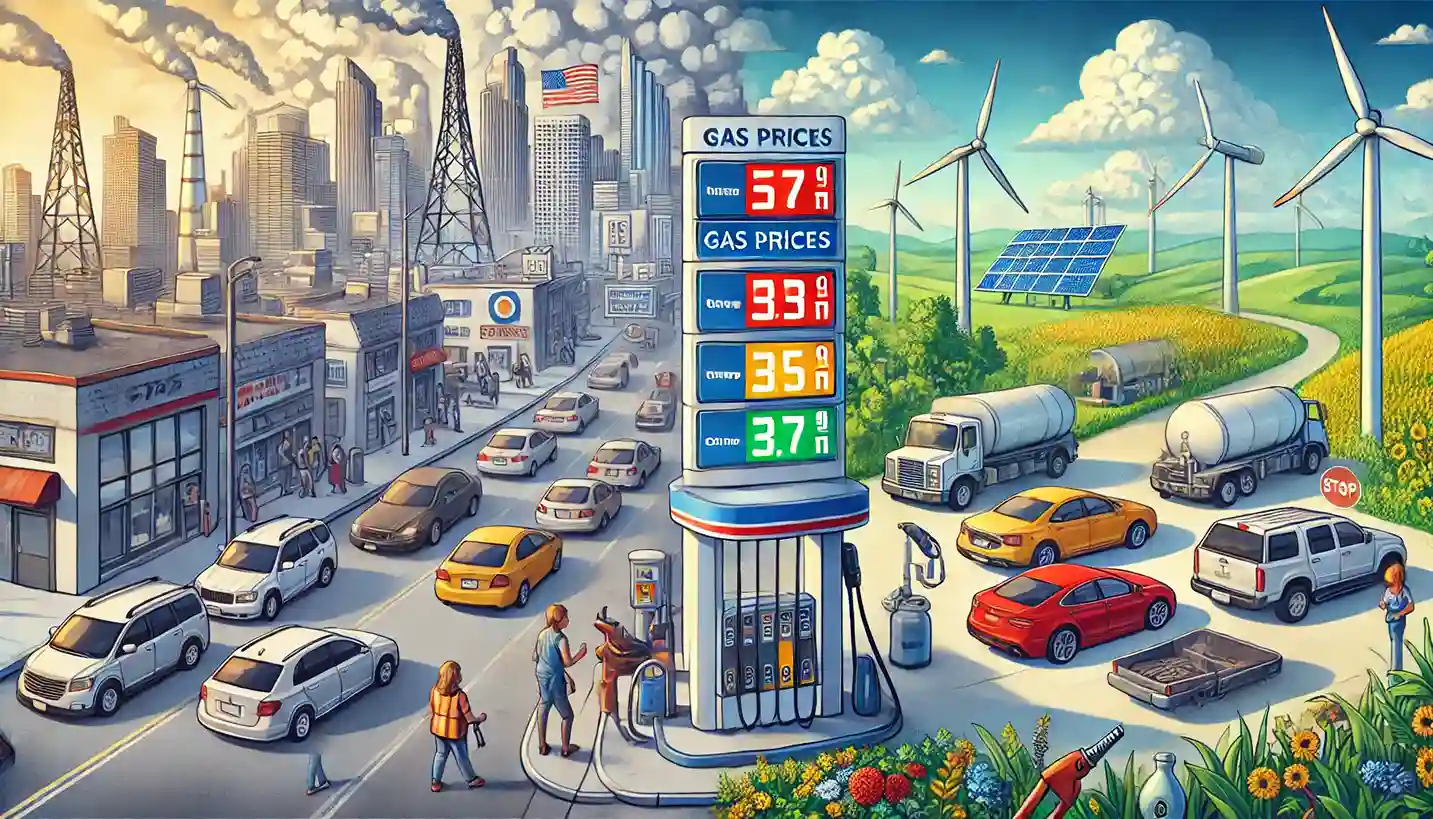The world of crude oil stocks is complex, with many factors influencing its fluctuations. One key player in understanding these changes is the U.S. Energy Information Administration (EIA). Their reports are eagerly awaited by traders, investors, and policymakers alike, as they provide critical insights into the health of the oil market. Let’s dive into what the EIA’s crude oil stocks change really means and how it impacts everything from global economies to your personal finances.
What is the EIA Crude Oil Stocks Change?
The EIA Crude Oil Stocks Change is a weekly report that details the amount of crude oil and petroleum products held in U.S. inventories. This report is crucial because it helps market participants gauge supply and demand dynamics.

Understanding the Basics
Every Wednesday, the EIA releases its Petroleum Status Report, which includes data on crude oil stocks. These stocks are essentially reserves held by refineries and storage facilities across the U.S. The report indicates whether stocks have increased or decreased over the previous week.
Why It Matters
The report is a barometer for market health. An increase in stocks often signals weaker demand or overproduction, leading to lower prices. Conversely, a decrease indicates stronger demand or supply constraints, potentially driving prices up. For anyone involved in the oil market, these insights are invaluable.
Historical Context: Crude Oil Stocks Over the Years
The historical trends of crude oil stocks provide a roadmap to understanding current market conditions. By looking back, we can identify patterns and predict future movements.
Decades of Data

The EIA has been tracking crude oil stocks for decades, offering a treasure trove of data. Historical trends show periods of surplus and shortage, each influenced by a myriad of factors like geopolitical events, technological advancements, and economic cycles.
Learning from the Past
For instance, the oil crises of the 1970s saw massive fluctuations in crude oil stocks, leading to skyrocketing prices. More recently, the 2020 COVID-19 pandemic caused a significant drop in demand, leading to unprecedented stock builds. These historical events highlight how external factors can drastically impact oil inventories.
Factors Influencing Crude Oil Stocks
Several factors can influence the levels of crude oil stocks. Understanding these can help make sense of the EIA’s weekly reports.
Supply and Demand Dynamics
The most obvious factors are supply and demand. When production outstrips consumption, stocks build up. Conversely, when demand exceeds supply, stocks draw down.
Geopolitical Events

Geopolitical tensions, such as conflicts in oil-producing regions, can disrupt supply chains, leading to stock fluctuations. Similarly, political decisions like sanctions or trade agreements can have significant impacts.
The Role of OPEC in Crude Oil Stocks
The Organization of the Petroleum Exporting Countries (OPEC) plays a critical role in the global oil market. Their decisions directly affect crude oil stocks worldwide.
Production Quotas
OPEC sets production quotas for its member countries to control the supply of oil. These quotas aim to stabilize prices but can also lead to changes in global stocks. For example, a decision to cut production typically results in lower stocks, driving prices up.
Market Reactions
The market closely watches OPEC’s moves. Announcements of production cuts or increases can cause immediate reactions in oil prices and stock levels. Understanding OPEC’s influence helps in anticipating market shifts.
Impact of Technological Advancements on Oil Stocks
Technology has dramatically changed the oil industry. From drilling techniques to storage solutions, advancements have a direct impact on crude oil stocks.
Improved Extraction Methods

Technologies like hydraulic fracturing and horizontal drilling have unlocked vast reserves, increasing supply and potentially leading to higher stocks. These methods have made it possible to access oil that was previously uneconomical to produce.
Enhanced Storage Solutions
Advancements in storage technology have improved the efficiency and capacity of oil reserves. Better storage options mean that oil can be stockpiled more effectively, helping to manage supply and demand imbalances.
The Influence of Weather on Oil Stocks
Weather patterns can significantly impact crude oil stocks. From hurricanes to harsh winters, various climatic conditions play a role.
Hurricanes and Production Disruptions
Hurricanes can wreak havoc on oil production, especially in the Gulf of Mexico. These storms can shut down refineries and offshore rigs, leading to temporary decreases in production and consequently, stock drawdowns.
Seasonal Demand Fluctuations
Demand for oil also fluctuates seasonally. For instance, winters typically see higher demand for heating oil, leading to lower crude stocks. Understanding these seasonal trends helps in predicting stock changes.
Crude Oil Stocks and Global Economy
The state of crude oil stocks has far-reaching implications for the global economy. Changes in stocks can signal shifts in economic health.

Indicator of Economic Activity
High crude oil stocks can indicate economic slowdowns, as lower demand for oil often correlates with reduced industrial activity. Conversely, low stocks can signal robust economic growth.
Inflation and Prices
Oil prices, influenced by stock levels, have a direct impact on inflation. Rising oil prices can lead to higher costs for goods and services, contributing to inflationary pressures.
Investment Strategies Based on EIA Reports
Investors closely monitor EIA reports to inform their strategies. Understanding the nuances of these reports can lead to profitable investment decisions.
Timing Trades
Traders use the EIA report to time their trades. For example, an unexpected increase in stocks might prompt selling to capitalize on expected price drops, while a decrease might trigger buying.
Long-Term Investments
Long-term investors use EIA data to identify trends. Consistent stock build-ups might signal an opportunity to invest in sectors that benefit from lower oil prices, such as transportation.
Impact on Gas Prices

The level of crude oil stocks has a direct impact on gas prices, affecting consumers at the pump.
Supply Chain Influence
Crude oil is a primary input for gasoline production. When crude stocks are high, gasoline prices tend to drop due to the surplus. Conversely, low stocks can drive up gas prices.
Consumer Spending
Fluctuating gas prices can significantly impact consumer spending. Higher prices at the pump leave less disposable income for other goods and services, affecting the broader economy.
Environmental Considerations
The management of crude oil stocks also has environmental implications. How we store and manage these reserves can impact our environment.
Spill Risks
Large oil reserves pose spill risks, which can have devastating environmental consequences. Ensuring safe storage practices is crucial to mitigating these risks.
Green Energy Transition

The fluctuations in crude oil stocks also highlight the need for a transition to green energy. Reducing dependency on oil can help stabilize these stocks and minimize environmental impacts.
The Future of Crude Oil Stocks
Looking ahead, several trends will shape the future of crude oil stocks. Understanding these can help in anticipating future changes.
Renewable Energy Growth
As renewable energy sources become more viable, the demand for crude oil may decrease, leading to changes in stock levels. This transition will be gradual but significant.
Technological Innovations

Ongoing technological advancements will continue to impact oil production and storage, influencing stock levels. Innovations in energy storage and efficiency could play a pivotal role.
Conclusion
The EIA Crude Oil Stocks Change report is a vital tool for understanding the oil market’s dynamics. It influences everything from global economies to the prices at your local gas station. By paying close attention to these reports, you can gain valuable insights into market trends and make informed decisions, whether you’re an investor, a policymaker, or a consumer. The world of crude oil stocks is intricate and ever-changing, but with the right knowledge, you can navigate it successfully.
FAQs
1. How often is the EIA Crude Oil Stocks Change report released?
The report is released weekly, every Wednesday.
2. What causes crude oil stocks to increase?
Stocks increase when production exceeds demand or when there are disruptions in distribution.
3. How do geopolitical events impact crude oil stocks?
Geopolitical events can disrupt production and supply chains, leading to changes in stock levels.
4. Why are gas prices affected by crude oil stocks?
Crude oil is a primary input for gasoline production; thus, stock levels directly influence gas prices.
5. How can investors use the EIA report?
Investors use the report to gauge market trends and time their trades for maximum profitability.
